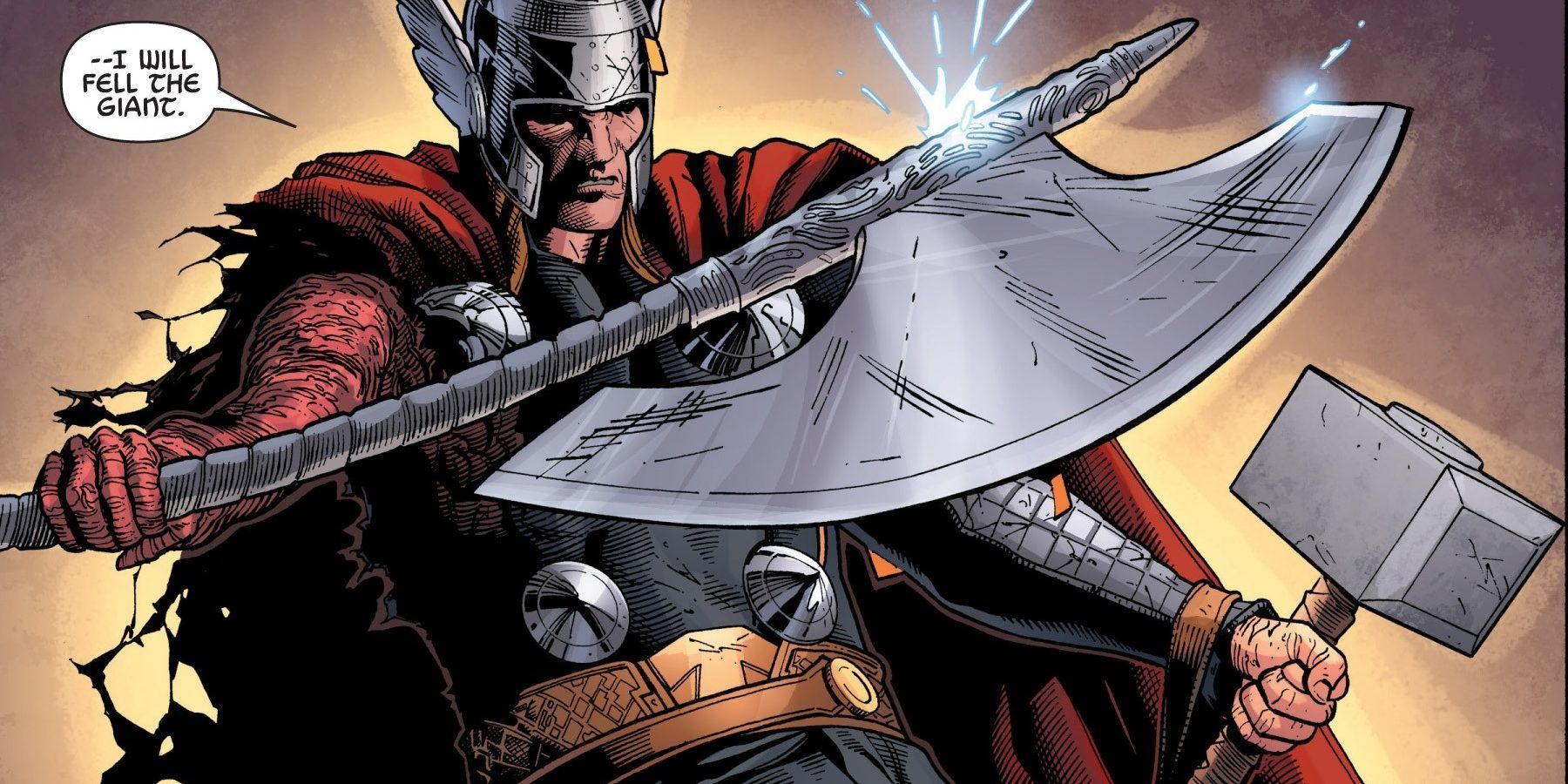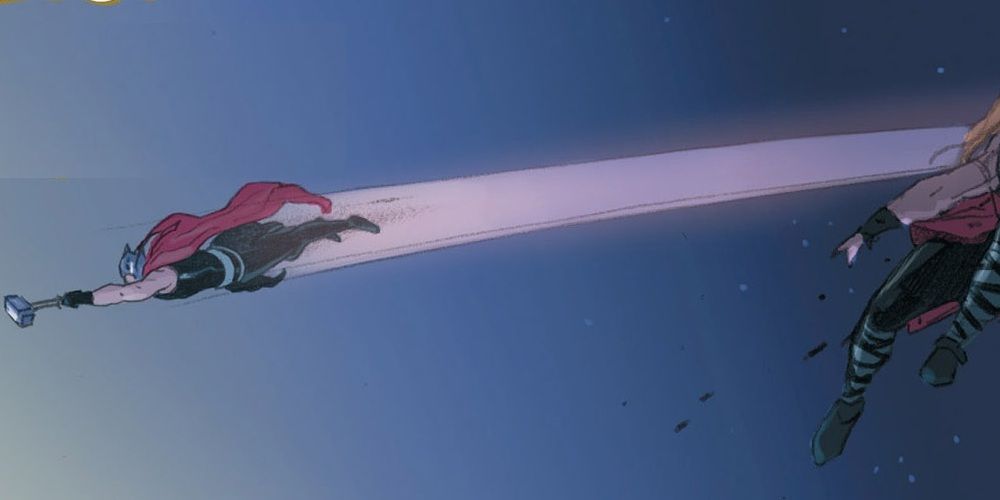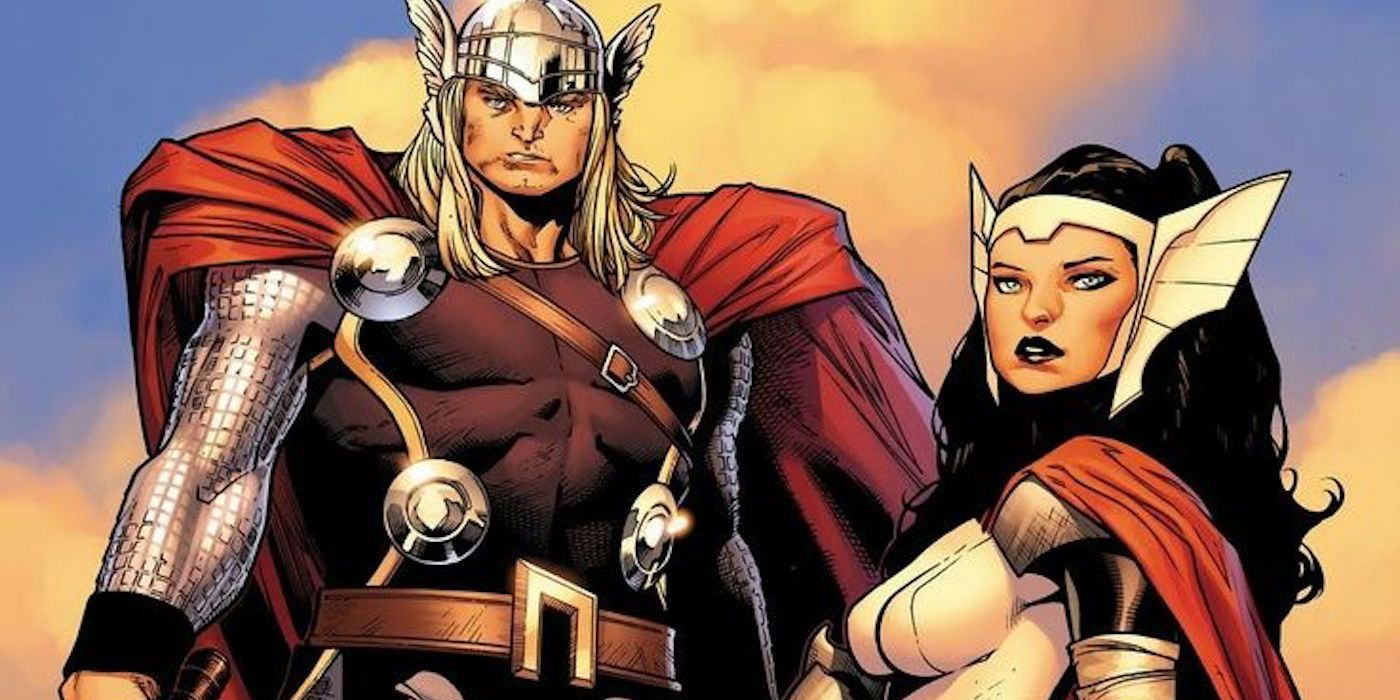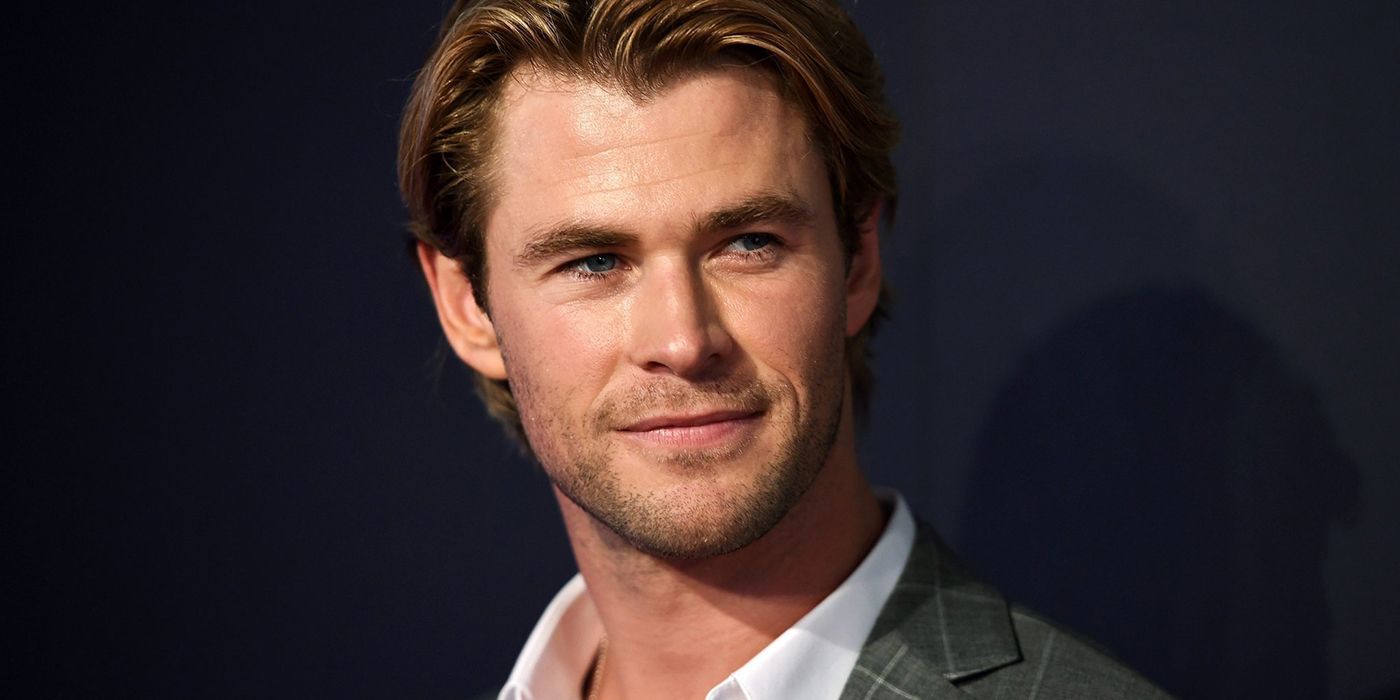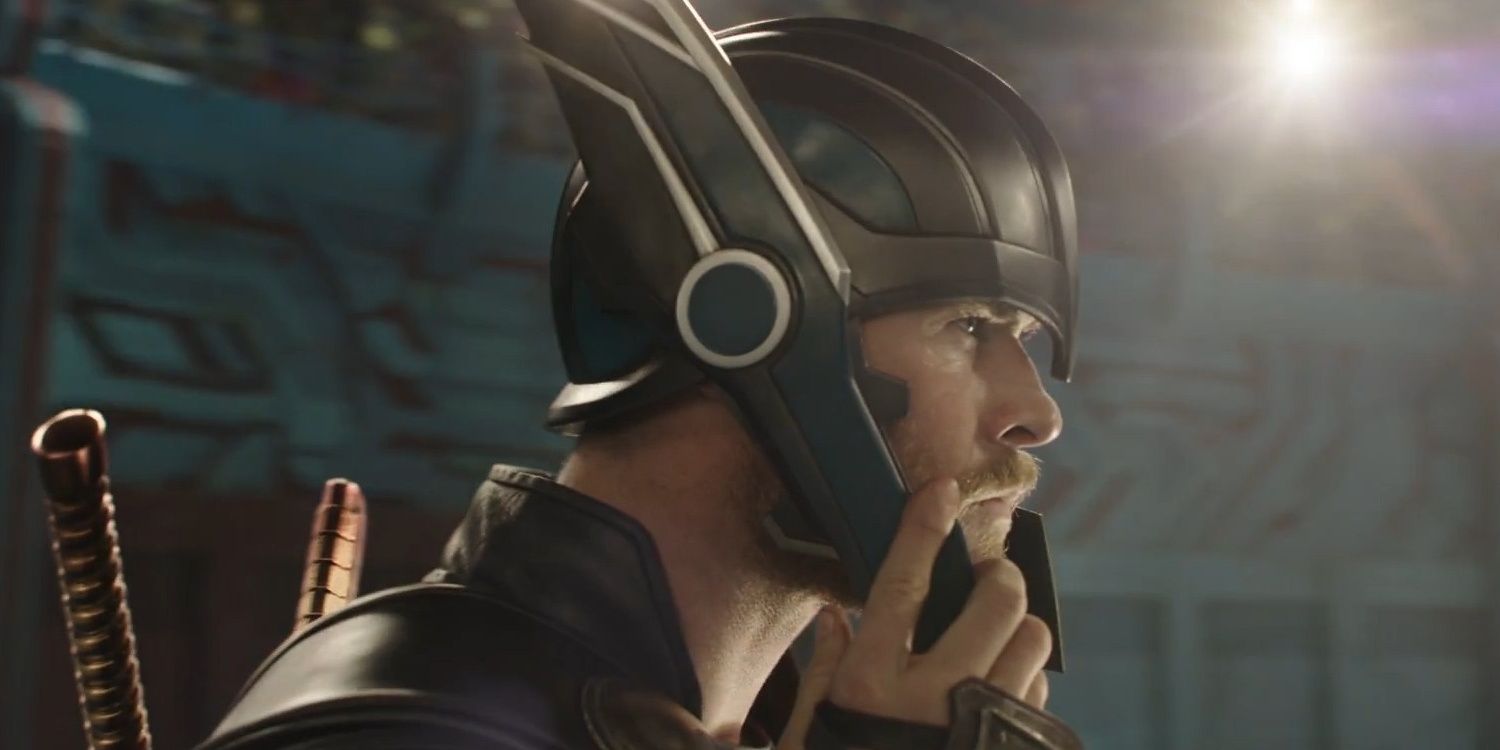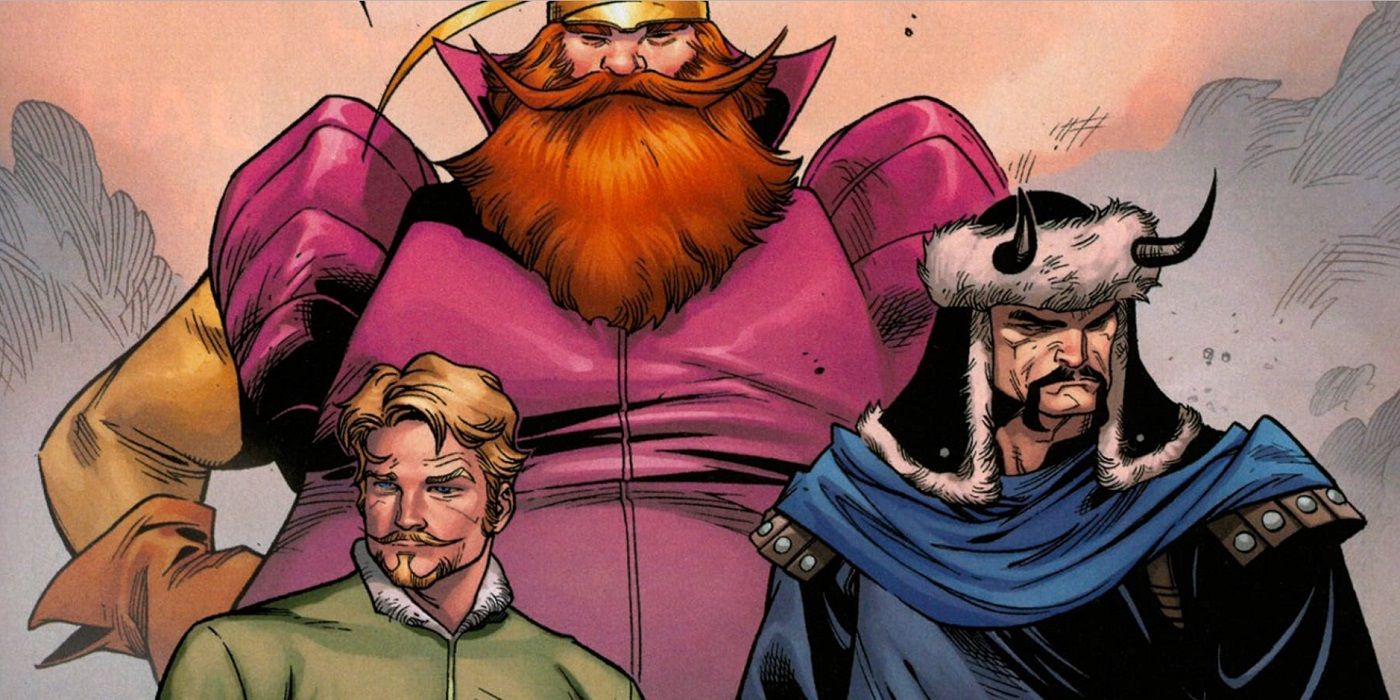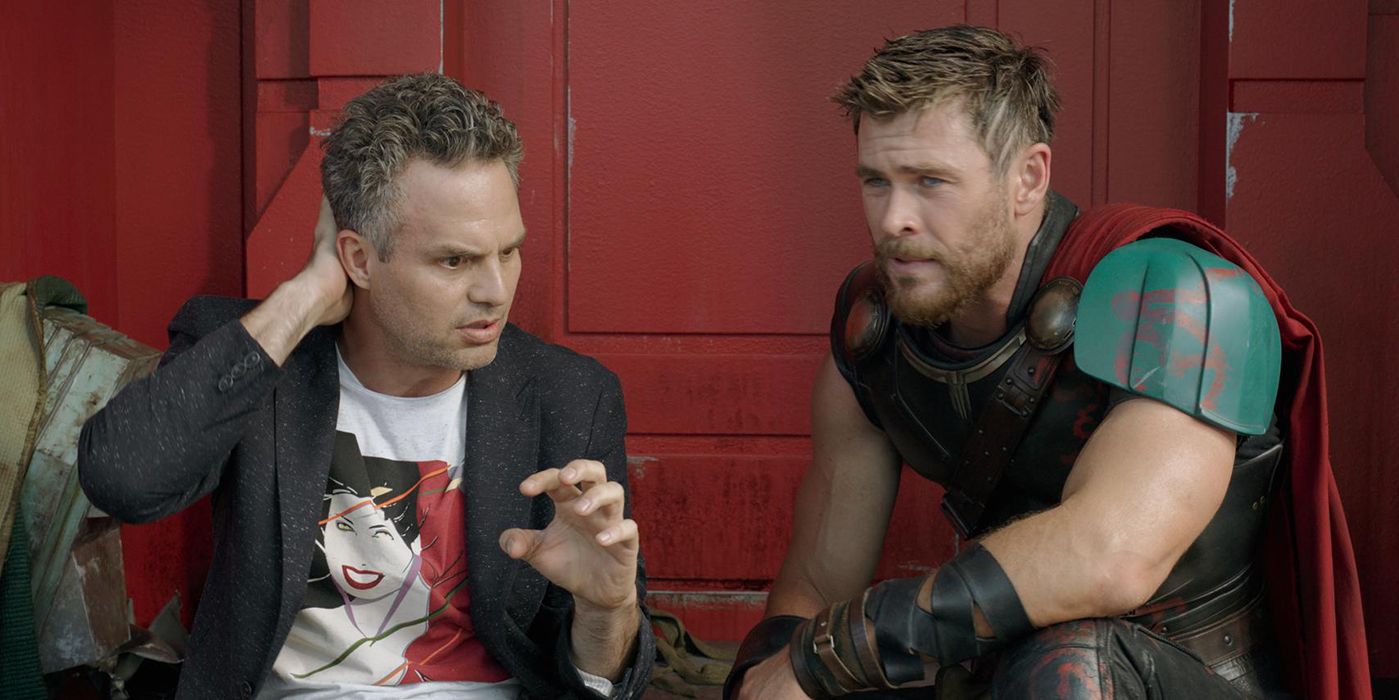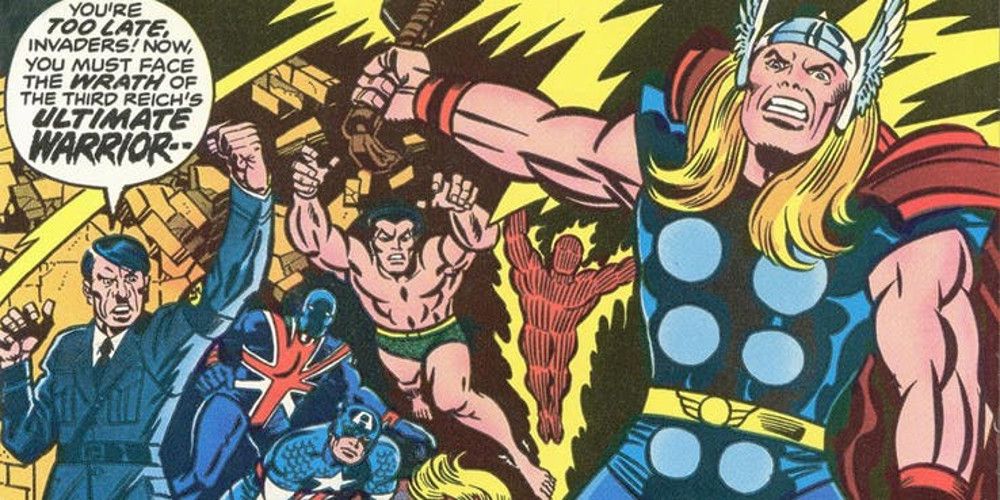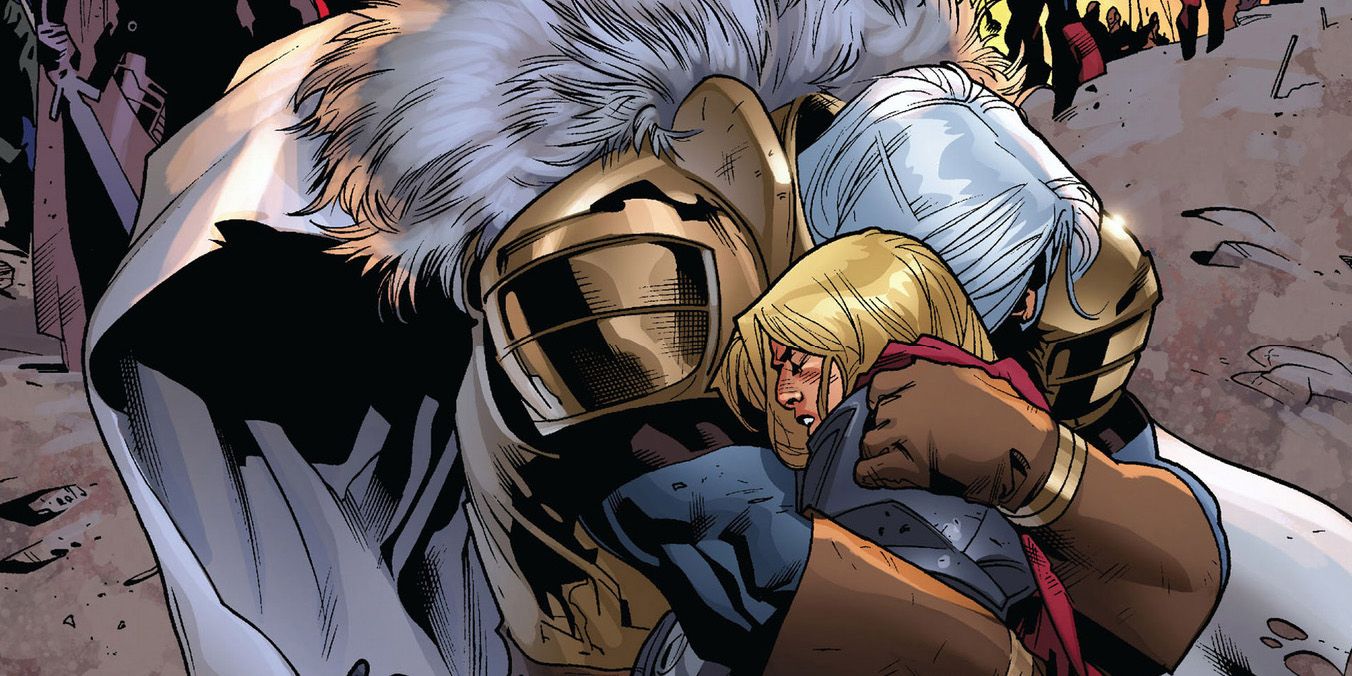Thor Odinson is totally awesome. This iconic god has certainly come a long way since his origins in Norse Mythology, finding fame all over the world thanks to Chris Hemsworth's portrayal of the character in the Marvel Cinematic Universe. Thor's origins actually date all the way back to the Roman Age, where he bears an uncanny resemblance to the Roman God of War, Jupiter.
More recently, in 7th Century AD, there were references in Old English made to Thunor, the Saxon interpretation of Thor. In the Viking Age references to Thor can be seen on charms and amulets. Then in the 13th Century, Thor and his exploits were compiled in the Poetic Edda. From there it's just a short, hop, skip and a jump to Jack Kirby's psychedelic sci-fi interpretation in the 1960's.
But how does Marvel's Thor contrast and compare to the Mythological Norse original?
10 Same: They Both Wield Mjolnir
Mjolnir is an iconic weapon of the Norse God of Thunder. The origins of the weapon vary between Marvel and ancient myths but the power levels of the weapon are similar - this is essentially a nuclear powered lighting boomerang, that just so happens to be shaped as a hammer. In Marvel, it is Odin, Thor's father, who was responsible for instructing the dwarves Eitri, Brokk and Buri to forge the hammer from a chunk of Uru.
In the ancient myths it is Loki who inadvertently helps create Mjolnir, after he challenges the dwarves Brokkr and Sindri to a competition - a 'forge off' - against another pair of dwarves, the sons of Ivaldi. Loki foolishly bets his head that Brokkr and Sindri would be incapable of besting the forging abilities of their rivals. In an effort to keep his head and win the bet, Loki transforms into a fly and bites Brokkr repeatedly during the forging. Eventually Brokkr is briefly distracted after a particularly nasty bite to the eyelid, this temporary loss of focus leads to Mjolnir having its distinctive short handle - originally the brothers intended it to be a two handed war hammer.
9 Different: The Mythological Thor Can't Fly
Ok, neither can Marvel's Thor. Not really. Instead, he utilizes the momentum and flight capabilities of Mjolnir to yoink himself through the air with the greatest of ease. This isn't the case for Mythological Thor, who instead relies on a magical chariot pulled by two goats to travel quickly. These goats, Tanngrisnir and Tanngnjóstr, crop up in two poems within the Poetic Edda. They're not just helpful travel companions either, they provide sustenance for a long journey. Not by providing goat's milk or cheese you understand, instead Thor eats them. He kills them, skins them, cooks them in a pot, eats the lot and then uses his hammer to bring their bones back to life the very next day.
Of course, Tanngrisnir and Tanngnjóstr turn up in the Marvel Comics to but are yet to make an appearance in the MCU. Let's hope that Thor: Love and Thunder changes that.
8 They Both Have An Extended Family
Jack Kirby and Stan Lee both sought to include a wide array of Thor's fellow Vanir and Aesir gods in the Marvel Universe. The vast majority of the Thunder God's comic and film co-stars all originally cropped-up in the Viking myths too. For example, Thor's wife Sif was made infamous in the myths when her head was shaved bald by a mischievous Loki.
In the original myths you'll also find Baldur, the brother of Thor, who was made impervious when his mother, Frigg, made every object on earth vow to never hurt her son. Every object that is apart from the humble mistletoe. The reasons for this are ambiguous, perhaps Frigg saw the humble mistletoe as being no threat? A fatal mistake, as, through a long and convoluted plan, Loki devised a situation in which the blind god Höðr unwittingly shot Baldur with an arrow made of mistletoe. Whoops.
7 The Mythological Thor Is Ugly
Whilst Marvel Comic's Thor has always been a dashing chap, it wasn't until the birth of the MCU and the casting of Chris Hemsworth that Thor was considered drop-dead gorgeous. Striking blue eyes, a chin chiseled from marble and the sort of physique that makes men, women, animals and minerals weak at the knees; Thor certainly stands out in a crow. The Thor of ancient mythology stands out for quite another reason however; he's ugly.
The original Thor had blood-red eyes, red hair and a wild and untamed red beard. Some accounts go even further, suggesting his face had a 'pig' like appearance. Still, when you spend the majority of your time smashing frost giants, who cares whether or not you can make people swoon with only a cocked eyebrow?
6 They Both Rarely Wear A Helmet
It's a credit to the sheer badassery of Thor than he can pull off wearing his silly helmet. A helmet with little fluffy white wings wobbling on the side is not what you'd necessarily expect a god of thunder to stride to battle in. Thor is rarely seen without his distinctive helm in the comics but that's not the case in the MCU. Chris Hemsworth's Thor rarely wears anything to protect his bonce. One reason for this is because he's dreamy to look at so why ruin a good thing with a big helmet? Another reason is - according to Hemsworth - that the helmet is "incredibly uncomfortable" and the "wings of the helmet in one of the fight scenes was getting clipped off".
It's the same for Thor in the ancient myths, there is no concrete evidence to suggest that he wore a helmet either.
5 The Mythological Thor Has No Idea Who The Warriors Three Are
Whilst most of Marvel Thor's chums share a heritage with the original myths, the Warriors Three do not. Created by Stan Lee and Jack Kirby, Fandral, Hogun, and Volstagg made their first appearance in Journey into Mystery #119. The Warrior's Three really haven't made that bigger dent in Marveldom, despite being around for several decades and having appearances in the MCU
The three do share one distinct characteristic however - they've all suffered unceremonious deaths. Thor: Ragnarok saw Hela despatch Fandral and Volstagg with ease (and nary a tear or even acknowledgment of their demise from Thor), whilst Hogun and Fandral suffered the most ignoble death in comicdom - off-panel.
4 They Have Both Bench Pressed The Midgard Serpent
Most superheroes have super strength, though the power of picking up a car is nothing compared to the strength Thor displays on a regular basis. In the comics Thor even managed, by putting his back into it, to lift the Midgard Serpent (an impressive feat as the beastie supposedly weighs 3.3-6.6 sextillion tons).
Mythological Thor is no slouch in the strength department either, he - thanks to his strength-enhancing belt, Megingjörð - was able to pluck the Midgard Serpent from the watery depths whilst out fishing. Though Thor only knows what that fishing rod was made of to lift such a weight.
3 The Mythological Thor Once Wore A Wedding Dress
Marvel's Thor has worn many different and varied costumes during his storied career but never a wedding dress. In the myths, Thor's magical hammer was stolen by the giant Þrymr and he had to disguise himself as a blushing bride to get it back. Þrymr wanted to marry the goddess Freyja as payment for the hammer, instead he received only a large, angry veil adorned Viking god.
Þrymr's wedding present was so much death it made the Blood Wedding look pleasant.
2 They've Both Done Some Really Evil Things
No hero can be good all the time, that's just impossible. Thor is a warrior god after all, so it stands to reason he's going to do some really mean things. And then there's the occasions where he's gone full evil. In Journey Into Mystery #93, Thor threw Radio-Active Man into China and caused a nuclear explosion, killing millions. Or the time he teamed up with Hitler to help kill Joseph Stalin in The Invaders #32. Probably the less said about that infamous episode the better.
Mythological Thor has his fare share of blood on his hands, he's responsible for killing thousands of giants. Many of them didn't even do anything wrong, it's just that Thor really, really doesn't like giants. One time he even killed a random innocent dwarf by kicking him into a burning effigy that was previously Baldur, just to make himself feel better!
1 The Mythological Thor Didn't Survive Ragnorak
Across the history of Marvel Comics, it feels like Asgard has undergone the Viking Apocalypse - Ragnarok - on a semi-regular basis. There was Ragnorak at the climax of Stan Lee and Jack Kirby's story in 1966, then it happened again when Surtur flamed onto the scene in Walt Simonson's 80's run, and once more during Michael Avon Oeming and Andrea Di Vito's Ragnarok in 2004. Despite his seeming death, it only took Thor and pals a few short years to be restored to full health. Heck, Thor has died many times and its never been anything more than a mild inconvenience on the road to rebirth.
The Mythological Thor didn't fare so well, he died defeating the Midgard Serpent in Ragnarok and was dead for good. Unless you read Walk Simonson's Ragnarok however - and you really should - where the culmination of the Norse Myths turn out quite differently.


